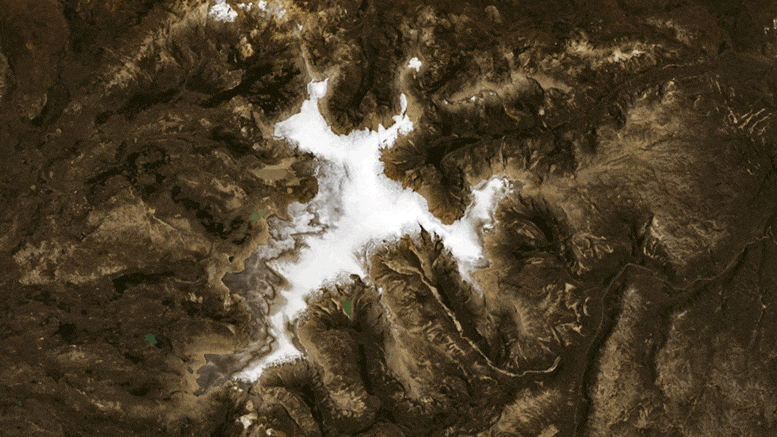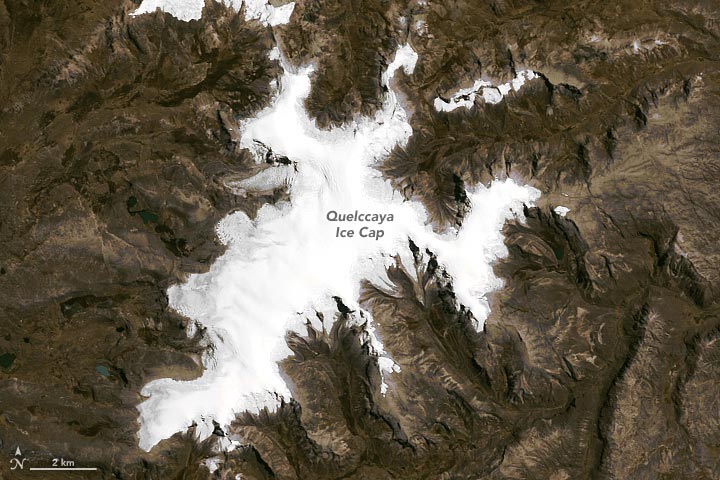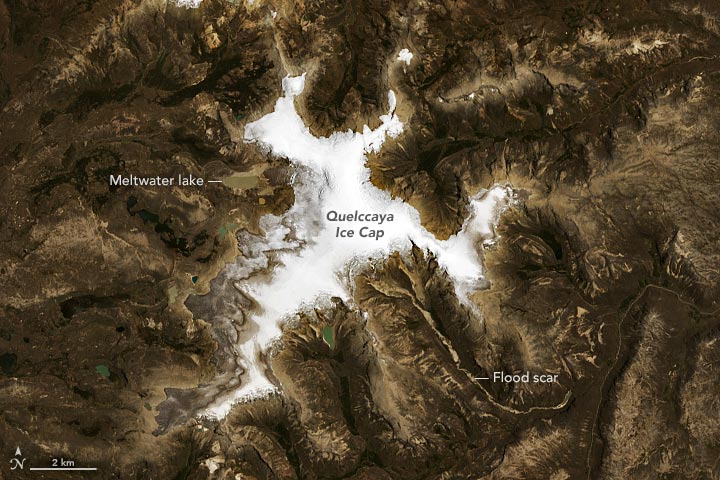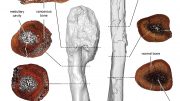
The Quelccaya Ice Cap in Peru has dramatically shrunk from 58 to 40 square kilometers between 1988 and 2023 due to climate change. This retreat is causing the loss of historical climate data preserved in the ice and significant environmental changes, including the formation of meltwater lakes and glacial floods.
Ice cores and satellite images are helping preserve the history of a disappearing ice cap in the Peruvian Andes.
The Quelccaya Ice Cap rests on a high-altitude plateau of the Andes Mountains in Peru. But like other tropical glaciers across the planet, the comparatively cold temperatures found at high altitudes are not enough to protect it from the grip of climate change.

Satellite image of the Quelccaya Ice Cap captured on September 3, 1988, by the Thematic Mapper on Landsat 5.
This image pair shows the retreat of Quelccaya’s ice edge between September 3, 1988 (above), and October 22, 2023 (below). They were acquired with the TM (Thematic Mapper) on Landsat 5 and the OLI (Operational Land Imager) on Landsat 8, respectively. Christopher Shuman, a University of Maryland, Baltimore County, glaciologist based at NASA’s Goddard Space Flight Center, estimates that the ice area in 1988 spanned about 58 square kilometers (22 square miles); by 2023, it spanned just over 40 square kilometers (15 square miles).
Notice the accrual of meltwater lakes in the later image, particularly along the ice cap’s western side. Many of these lake basins, carved by moving ice, have lost contact with the ice that formed them. The ice cap also feeds the Vilcanota River and Lake Sibinacocha (west of this image) and has long been an important water source for people living nearby and downstream.

Satellite image of the Quelccaya Ice Cap captured on October 22, 2023, by the Operational Land Imager on Landsat 8.
Some of the lakes have already come and gone during the span of these images, including one that in November 2022 produced a glacial lake outburst flood (GLOF). Shuman detected the event in Landsat images showing the emptying of a lake on the ice cap’s eastern side and a long path where the rushing floodwater had scoured the vegetation. The flood scar is still visible in this 2023 image.
Before Landsat satellites revealed the decadal changes, scientists already knew the ice cap was shrinking. Since 1974, Lonnie Thompson and colleagues from Ohio State University have been mounting expeditions to study Quelccaya up close.
“Both ground-based and satellite images allow the documentation of the rates of glacier retreat, which now average about 14 meters per year,” Thompson said. Thompson’s team has shared Landsat images documenting the ice cap’s retreat with local officials and indigenous people living near the ice cap.
As the planet’s tropical glaciers are being lost, so are the temperature and climate records long preserved in their ice. Thompson’s team has drilled ice cores from many tropical glaciers, including Quelccaya. By analyzing the layers in these cores, scientists can get a near-annual record of air temperatures and atmospheric composition dating back 1,800 years.
“Tropical glaciers might represent our only opportunity to capture global mean temperature changes through time, as well as how climate and the environment have changed in an area that represents 50 percent of the surface area of our planet and where over 50 percent of our 8 billion people live,” Thompson said.
At Quelccaya, that record could be gone by the end of the 21st century—the expected timeframe for the ice cap’s demise. “The only proof of its existence will be the land-based and satellite images of what was once a magnificent ice cap located directly above the Amazon Basin.”
NASA Earth Observatory images by Wanmei Liang, using Landsat data from the U.S. Geological Survey.









Be the first to comment on "Melting Majesty: Quelccaya’s Ice Cap Shrinks in Climate’s Grip"